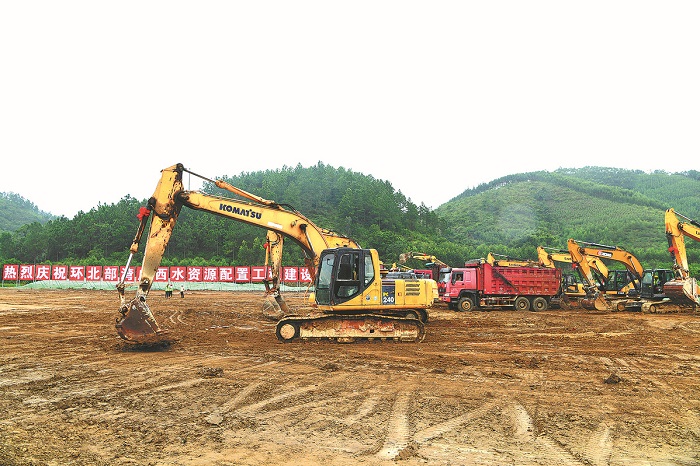Diversion project to secure water supply in Beibu Gulf

The massive water diversion project for the Beibu Gulf breaks ground in Hepu county of Beihai, Guangxi Zhuang autonomous region, in September last year. ZHOU HUA/XINHUA
The massive water diversion project for the Beibu Gulf in the Guangxi Zhuang autonomous region, is expected to meet the water needs of 14 million people when it is completed by the end of this decade.
Launched in September, and estimated to cost 28 billion yuan ($3.87 billion), the project aims to relieve water shortages in the Beibu Gulf, which has experienced declining rainfall in recent years.
Aside from enhancing the water supply, the project will help reduce the overexploitation of water and improve the health of the local aquatic ecosystem, according to Guangxi's department of water resources.
Once completed, it is expected to divert an average of 805 million cubic meters of water annually from the Yujiang River to Nanning, Beihai, Qinzhou and Yulin in Guangxi.
About 404 million cubic meters of the diverted water will be used to meet domestic demand, benefiting 14 million residents.
With a total length of almost 492 kilometers, the project will connect 12 rivers and 15 reservoirs.
The project was launched following a decline in precipitation in Guangxi's Beibu Gulf region. The precipitation the region received in 2007, 2009, 2011 and 2021, was remarkably less than the annual average.
From October 2022 to September, the rainfall in the region decreased by 60 percent from the same period in normal years, and the amount of water that flowed into water courses in the region also went down by about 50 percent.
"In Nanning, the capital of Guangxi, over 90 percent of water consumed in the city is from the Yongjiang River, resulting in reliance on a single water source. Meanwhile, Qinzhou depends primarily on the Qinjiang River for water. It has no adequate emergency backup capacity for water supply," said Zhao Hui, an official with Guangxi's department of water resources.
The project will diversify the water sources for the two cities, enhancing the safety of their water supply, he noted.
Thanks to the project, the region will no longer have to obtain 154 million cubic m of water every year from the Nanliu and Qinjiang rivers, and annually exploit 199 million cubic m of groundwater, the department said. This will help improve the aquatic environment in the region and maintain the local ecology.


